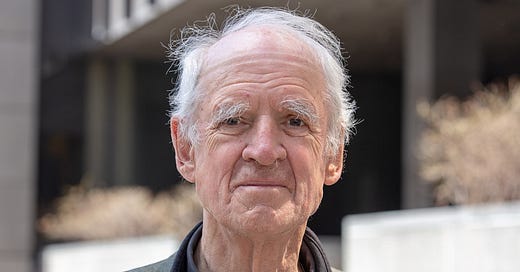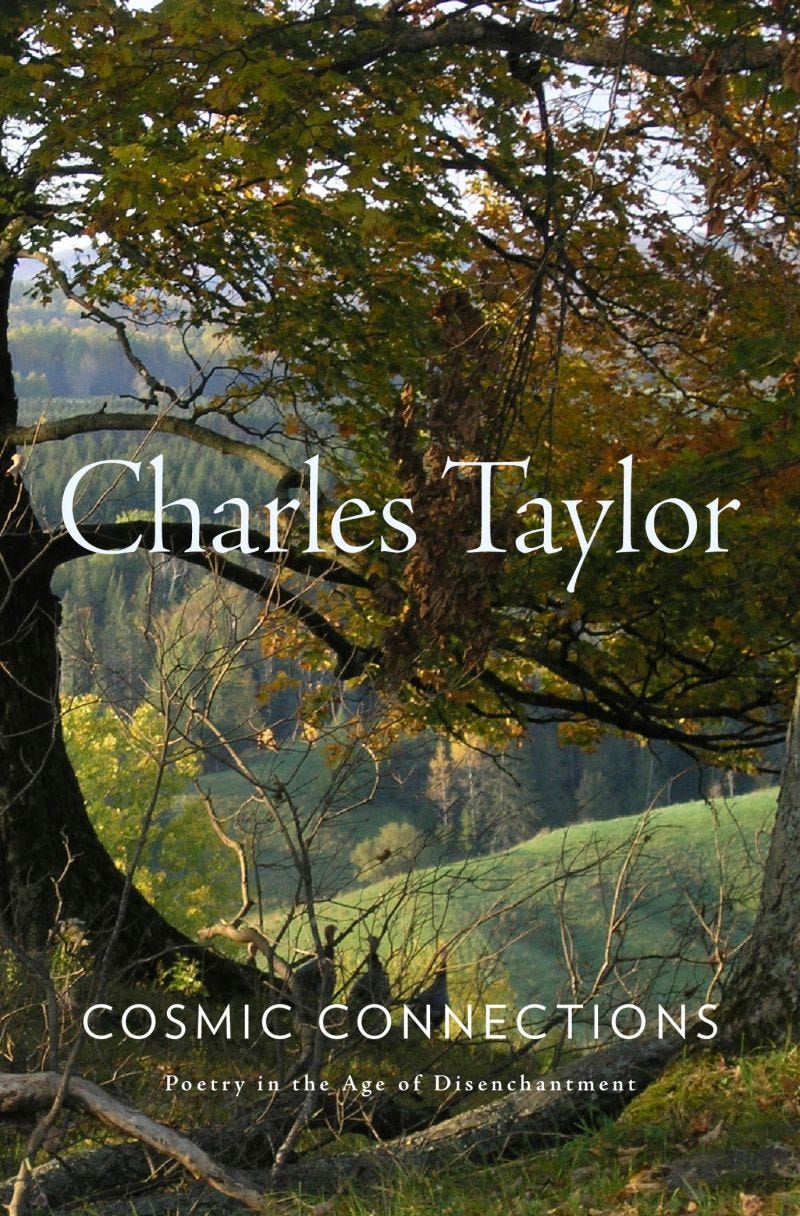Quotes & Thoughts from Cosmic Connections: Poetry in an Age of Disenchantment by Charles Taylor
17 May 2025: Abba Day!
Prefatory Note: This is the first post in an effort to catch up on reviewing (or at least noting) some of the books I’ve finished of late. I’ll share some quotes from each book to allow the author to explain briefly what he or she intends with the work, and I’ll follow with some reflections of my own. This first book provides a perfect example. You’ll find I’m given to read outside my lane and far above my pay grade. But the brain, like the muscles, needs to be challenged with some heavy lifting and serious stretching. I contend that even if I can follow Charles Taylor (an eminent philosopher) only half the time, I’ve gained something. Such is the case here, and so with several other works I’ll be sharing in this series.
Cosmic Connections
Charles Taylor
[This] book is about (what I see as) the human need for cosmic connection; by “connection” I mean not just any mode of awareness of the surrounding world, but one shot through with joy, significance, inspiration. My hypothesis is that the desire for this connection is a human constant, felt by (at least some) people in all ages and phases of human history, but that the forms this desire takes have been very different in the succeeding phases and stages of this history.
. . . .
I want to look at the last two centuries or so, starting from the shift in literary and artistic sensibility that we tend to sum up with the term “Romanticism,” in all its varied forms. I have chosen this shift because it corresponds to a moment when the previously viable form of cosmic connection became unviable.
. . . .
In this earlier mode, cosmic connection involved the invocation of orders structuring the cosmos which distinguished higher from lower realities, self-realizing orders on the model of Platonic forms; schemes like Lovejoy’s Great Chain of Being, or the Kabbalah, which defined the higher reality powering the merely visible / tangible world we live in.
. . . .
The Romantic period, beginning in Germany in the 1790s, was the moment in which the drive to cosmic connection started to take another form. This book begins with an attempt to characterize this form, in which works of art take on a crucial role. I will be mainly concerned with some poets of this period. Their works bypass the philosophical objections to the belief in cosmic orders but generate in the reader the felt sense of a reality higher and deeper than the everyday world around us. . . . The shift from cosmic orders to those invoked by some poets of the period (for instance, Wordsworth or Hölderlin) involved what I call an “epistemic retreat.” They generate a powerful experiential sense of cosmic order but stop short of affirming the reality of these orders in the objective world beyond human experience.
. . . .
[S]ome of the most significant poetry invoking higher times comes with early twentieth-century “modernism” (Eliot) and continues in the work of Czesław Miłosz.
I enjoyed this book a good deal. I say this upfront because I began afraid that I wouldn’t enjoy it. Looking at it, I was intimidated. The book emphasizes poetry, and I claim no special or deep knowledge of poetry as a body of works or as an art form. (Alas, I am a prosaic felllow.) But this work is a part of a series from Taylor that I’ve partially made my way through and that I want to know better. (The Sources of the Self; A Secular Age, The Language Animal, and now Cosmis Connections.) I completed Sources; have gone part way through Secular Age; and I’m now going to go back to Language Animal. I have no sound reason for jumping this line to this work, except that the a couple of aspects of Cosmic Connections intrigued me. First, its emphasis on German Romaniticism. The second is his examinatio ofn Eliot. I know some about the German Romantics and their philosophical cousins, but I wanted to indulge my curiosity about the poets. (Without, I must note, knowing the Gmeran language outside of some isolated vocabuary.) Also, the French poets Baudelaire and Malarme received series attention in this work. And I am acquatined the T.S. Eliot, although even with a much greater acquaintance with his works and his language, I’m more often than not baffled by his poetic nuance. At any rate, I jumped in and kept at it. And, as I noted at the beginning, I’m glad I did.
Taylor provides an in-depth exposition of his poets (including English tranlations of the non-English poems). Yet for all of his knowledge and depth, I didn’t feel like he was writing entirely over my head. His thesis—that some poetry, beginning with the German Romantics—seeks to indentify sources of “cosmic connections” that seek to fill the gap left by the disenchantment found in the Modern Age. These poetic cosmic connections may be in lieu of traditional religion or as a supplement to traditional beliefs. I should also note that he occasionally brings in music, painting, and other arts to supplement his argument. He argues (more implicitly than explicitly) that we all seek connections—meaningful connections—with the world around us, other humans and the natural world. To me, it’s a fascinating subject, and one that as a student of 19th and 20th century history politics, I continue to explore, even as it takes me out of my otherwise prosaic reading.
To be clear, I’ve only skimmed the surface of this lengthy, complex book, but I hope I’m able to provide some insight into its value. It’s an impressive work.




